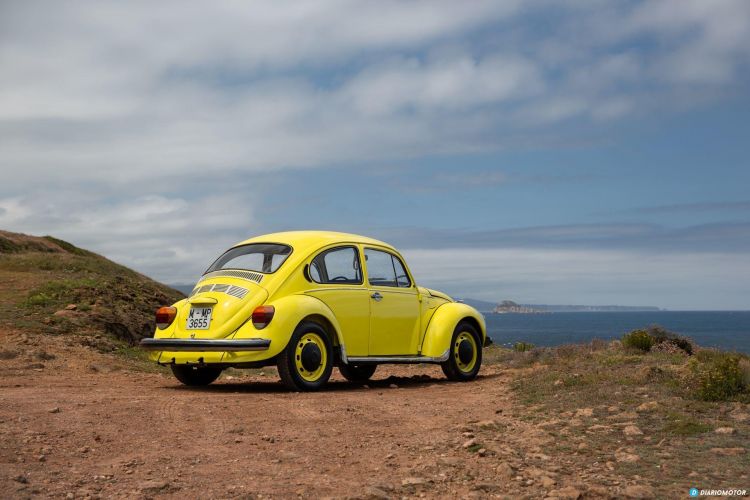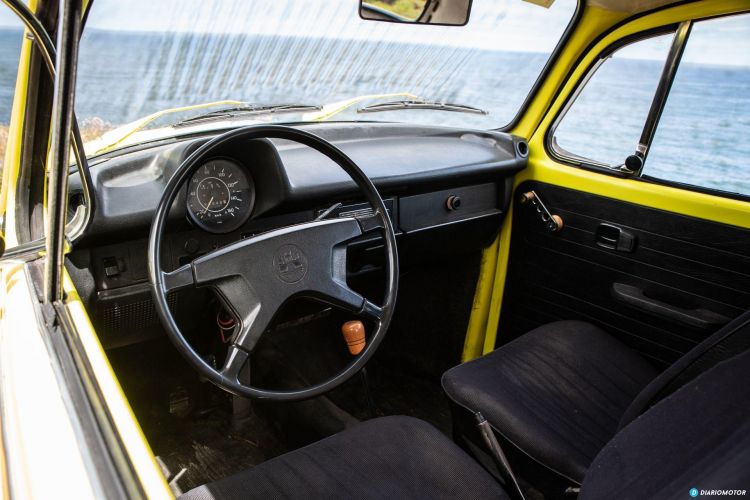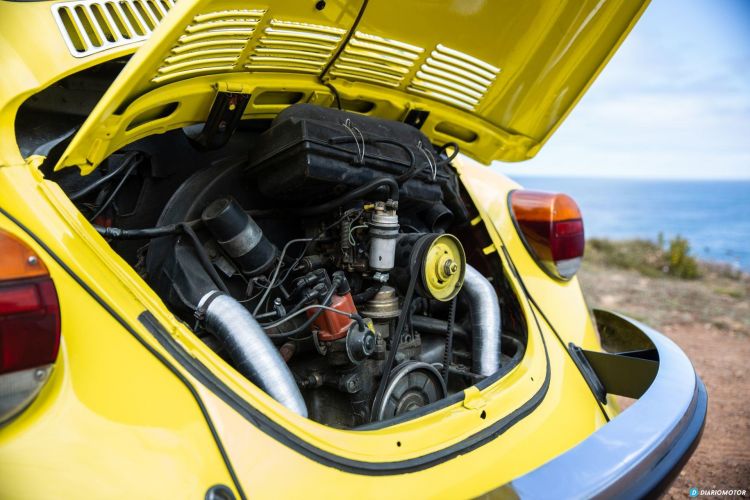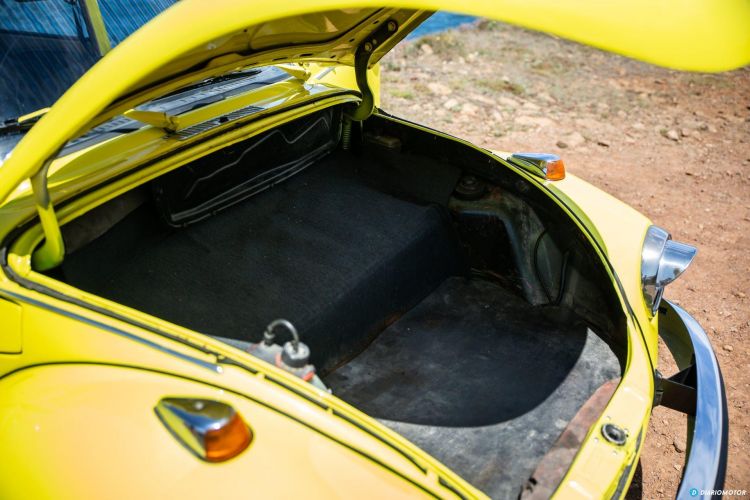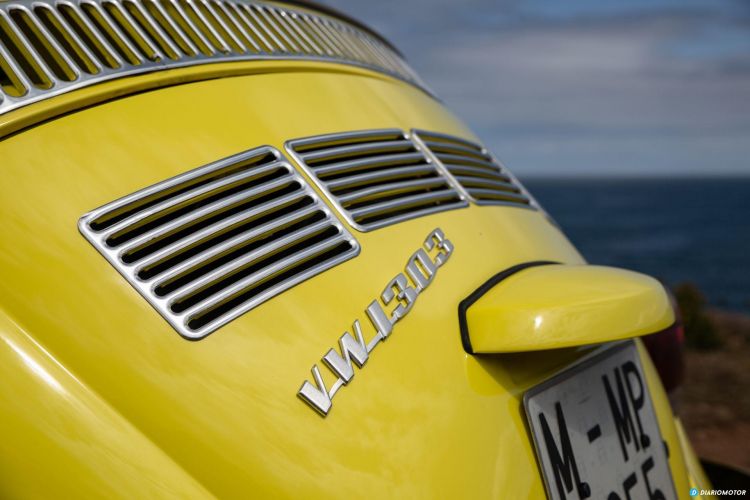The classic tests are back on our YouTube channel. After introducing you to cars as curious as the Citroën CX or cars as relevant as the Renault 4 or the Citroën 2CV, it is time to introduce you to one of the great classics in history: the VW Beetle. For decades, it was the best-selling car in history and was in almost uninterrupted production for a whopping 65 years. In this video we not only want to explain its historical relevance and genius simplicitywe want you to understand why 21 million units were sold.
What is really relevant is not that 21 million units were sold – an impressive figure that has been surpassed only by cars like the Volkswagen Golf or the Toyota Corolla – but that it did so while maintaining a formula that from its inception, was technically surpassed by contemporaries such as the Citroën 2CV. The history of the Volkswagen Beetle begins in 1934, when a certain Adolf Hitler appointed Ferdinand Porsche as the leader of the “Völkswagen” project. The “people’s car” that should motorize a Germany that it was suffering a great economic and moral crisis.
The origin of the Volkswagen Beetle was a “people’s car” devised by Adolf Hitler. How did you end up becoming a hippie icon?
must be a car capable of cruising 100 km/h on the newly created German Autobahn network, with two adults and three children on board, consuming 7 liters per 100 km. In addition, its target price was 990 marks, and it would be acquired through KdF (Strength through Joy), a political association of the National Socialist Party dedicated to “shaping” the free time of the German population. Porsche had already developed rear-engined cars for NSU and Zündapp in the early 1930s, and rear-engined cars weren’t much of a novelty.
In fact, the engineer Béla Bárenyi accused Volkswagen of plagiarism: his patent for a rear-engined car designed in 1925 for Mercedes was recognized as the “inspiration” for Porsche’s designs, and a compensation agreement was reached by the Austro-Hungarian in the courts already in the fifties. Hans Ledwinka, an engineer at Tatra, worked with Porsche designing a similar car in the early 1930s, and the two companies had disputes over the authorship of the air-cooled rear-engine utility concept.
Why did he get the nickname Käfer (Beetle)? At first it was only available in black and its shape – especially its split windows – was reminiscent of the insect.
The first units of the Volkswagen Type 1 were delivered to members of the government between 1938 and 1939, being the first cabrio delivered to Hitler himself for his “mass baths”. Everything changed with the outbreak of the world war. Between the years 1939 and 1945, the new facilities in Wolfsburg were turned over to the war effort. The Beetle was the basis for the Kübelwagen, the German equivalent to the American Jeep, as well as the amphibious Schwimmwagen. The “common” Beetle continued to be produced in low numbers as a car for army command mobility.
By the time the war ended in 1945, tens of thousands of Kübelwagen and military variants of the Type 1 had already been produced. At the end of 1945, months after the end of the war, Beetle production resumed again. How was this possible in a completely devastated Germany? The Volkswagen factory in Wolfsburg was bombed, but the stamping molds were not affected: the bomb that fell on them did not explode. British Major Ivan Hirst – Great Britain occupied the German zone in which Wolfsburg was – was in charge of defusing the bomb that had not exploded, and making sure that car production started again: the tens of thousands of soldiers displaced to Germany urgently needed means of transport.
The Beetle was one of the symbols of the economic resurgence of Germany after the world war.
By 1947 the production of cars for civilian purposes was already possible. and during the 50s the car was already exported to dozens of countries. Its decade of maximum popularity was the 60s, and the United States was its main market for years and years – a market in which the Citroën 2CV or Renault 4 were not able to compete. It was a very affordable car – Volkswagen marketing achieved great success thanks to its commercial campaigns and its low price – reliable and very cheap to maintain, something that helped make it popular with young people who were part of the disruptive social movements of the 60s – like hippie culture.
The evolution of the Beetle was constant during the more than 60 years that it was in production. Although its base was the same, the car gained in power, performance and technical improvements, while retaining its air-cooled boxer mechanical characteristic. When production ceased in 2003 (in Puebla, Mexico), 21.5 million units had been manufactured. Although it was already a completely outdated car, the original Beetle managed to survive no less than four generations of the Volkswagen Golfdesigned as its replacement… in 1974.
The reasons for its success were not only its price, its simplicity or its reliability. It was an endearing car full of character.
“Dilau”, the Volkswagen Beetle 1303 that we have tested
The tested unit is a Beetle 1303 from the year 1973. It is, fundamentally, the last evolution of the European Beetle, whose production ceased in 1978. Since the mid-60s, the Beetle had already grown in size and its bodywork had been slightly redesigned. At the beginning of the 70s, it debuted technical improvements such as a front independent suspension and a redesigned front end to house a larger front trunk. Before we go into some interesting details, we thank its owners for loaning this unit out for testing.
Our attention is drawn to size of the front trunk, no less than 260 liters and with the fuel tank in a forward position to improve its weight distribution. One detail that you may not know is that the windshield washers were powered by the air pressure from the spare tire itself, eliminating the need for an electric pump for the water jets. Its characteristic fenders and footpegs dominate a profile that then boasted a drag coefficient of 0.48. Today, a derisory fact, then impressive for a compact car.
The boxer engines that Porsches boast can trace their origin directly to the Beetle.
Yes, I said compact: the Beetle measures 4.08 meters long, being longer than the first generation of the Volkswagen Golf. At the rear is the real key to the Beetle, its rear engine. A rear-engine four-cylinder, air-cooled, opposed-cylinder boxer design. The reason was not just simplicity and lightness: it could do without antifreeze in frigid climates where early coolants suffered from freezing problems. This nearly 1.3-litre carbureted engine only develops 40 hp in this version 1303.
It may seem like a low power, and although it only had 31 CV/liter of specific power, it could boast of great reliability. It did not work under great mechanical stress and its displacement, high for the time and high in relation to its power, developed a healthy torque. In addition, its extremely compact rear position maximized traction on the rear axle, freeing up space for a second boot behind the rear seats. A Renault 4 was a more practical and roomy car – its tailgate had a lot to do with it – but the Beetle wasn’t that far off.
Until the 1970s, virtually all Volkswagens boasted air-cooled boxer engines.
The interior of Dilau is in perfectly original condition. Everything works, but really, there’s not much that can break: the instrumentation only tells us the speed and fuel level, it has a simple radio and a simple system of dampers to channel hot air from its rear for heating. I was surprised by space on board in its five seats and the good ergonomics of the cardespite lacking adjustments on the steering wheel and having its three pedals articulated on the same hinge.
In gear, the location of the pedals is not awkward, although as is always the case in cars without a brake booster, you have to press the brake hard to achieve satisfactory stopping power. What we liked the most is that contrary to what happens with other classics, the car it feels much more relieved, without that nagging feeling of lack of power that I have noticed in a 2CV or a classic MINI. Shift feel is surprisingly precise and the steering has fantastic feedback, despite having some center clearance.
On paper, this Beetle could already exceed 120 km/h.
The sound of the engine is beautiful and very characteristic, with clear reminiscences of the old Porsches from which it is based. It starts at the touch, without the need to pull the air. To all this, visibility is fantastic in all directions, as is the case with many classic cars. Driving this Beetle is a great experience, and the freedom and sensations that I feel behind the wheel make me understand the fascination that exists for these vehicles. We hope you enjoyed this test as much as we did testing the vehicle, and understood its historical significance.

